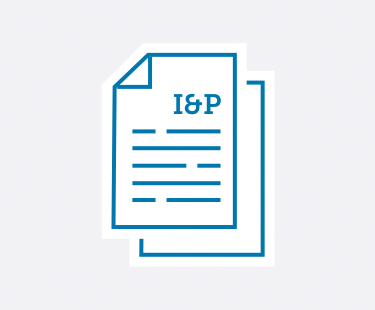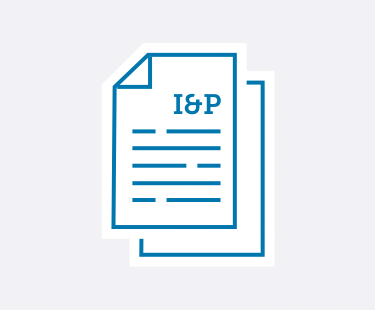

Learn practical strategies to handle emerging trends and leadership challenges in private schools.
No matter if you’re a School Head, Admission Director, Development Director, Board member, or any other private school administrator—Ideas & Perspectives®, ISM’s premier private school publication, has strategic solutions for the pervasive problems you face.
- Tuition not keeping pace with your expenses? In I&P, explore how to use strategic financial planning to create your budget and appropriately adjust your tuition.
- Enrollment dropping off? Discover how to implement the right admission and enrollment management strategies that engage your community—and fill your classrooms.
- Trouble retaining teachers? Learn how you can best support your teachers using ISM’s Comprehensive Faculty Development framework. Your faculty members will become more enthusiastic about their roles—which ultimately improves student outcomes.
- Fundraising campaigns not as successful as you’d hoped? Implement ISM’s practical advice and guidance to build a thriving annual fund, construct an effective capital campaign, and secure major donors—no matter your community size or location.
- Not sure how to provide professional development—for you and your staff? Learn ways to develop and fund a successful professional development strategy. You can improve teacher-centered satisfaction and growth, which in turn strengthens student-centered learning.
- Problematic schedule? You can master the challenges of scheduling with the help of ISM’s practical advice, based on our experience with hundreds of schools and our time-tested theories.
- And so much more.
I&P has shared targeted research, up-to-date insight, and sound theory with school leaders since 1975. More than 8,500 private school decision-makers find the answers to their schools’ administrative and governance matters in our advisory letter. We give you the strategic answers you need.
As an ISM Silver or Gold member, you not only receive issues online and in print 10 times a year, but you have access to 900+ articles in our web archive. Need help? It’s at your fingertips! Learn more and sign up for ISM's membership here.
Search
See the articles from our latest issue of Ideas & Perspectives.
The Marketing Communications Director: The School’s Bridge
Volume 41 No. 7 // June 6, 2016
For the School Head, the marketing communications function poses several dilemmas. It may be a leadership role or a service role. Is it key to the school’s operations or is it tangential? Marketing can involve creating product and placing advertising, or it may have strategic dimensions that require higher-order skills. Should it report to “me” or should it report to someone else? Who is in control of communications and what does that look like in the age of smartphones? A person may direct communications, or this may be diffuse set of actions with inputs and outcomes in all school areas
1. Already a member? Click here to login.
2. Not a member? Click here to become a member.
3. Not sure? We'll help you figure it out.
The Board’s Education Committee: Justifiable?
Volume 41 No. 7 // June 6, 2016
As Board President, you are aware that a perennial question discussed by school leaders is the “validation” of a school’s student programs: curriculum, cocurriculum, pedagogy, vertical alignment, and other components in a private-independent school’s mission-delivery system. After all, any school’s mission has its strongest impact in classrooms and on playing fields.
1. Already a member? Click here to login.
2. Not a member? Click here to become a member.
3. Not sure? We'll help you figure it out.
Cost-Effective Solutions for Managing Risk
Volume 41 No. 6 // May 9, 2016
Your risk assessment team has completed the data-gathering portion of its task and now works through the process of mitigating any risk discovered. The major challenge, after identifying risk, is to prioritize the areas where the school is most vulnerable, and strike the often-delicate balance between the need to control each risk and the cost involved. As the Business Manager, you serve as supervisor of this project. Your next step is to reconvene the assessment team to review the findings and identify the most cost-effective ways to strengthen the school’s safety net.
1. Already a member? Click here to login.
2. Not a member? Click here to become a member.
3. Not sure? We'll help you figure it out.
Marketing Your School’s Advisory Program
Volume 41 No. 6 // May 9, 2016
ISM recently updated and reported on its survey database of parent opinion on the factors most influential in families’ choice of a private-independent school. While the perceived quality of the academic program is highly important, several high-ranking factors taken together reflect an emphatic desire for a safe and caring community. “Faculty care and concern” and “Character development/values” were the top two variables. Recognize and take action on the strategic opportunities this information provides by developing and implementing a marketing and communication plan to highlight how your school delivers these institutional qualities, particularly through the mission-based advisory program that engages and supports students in your middle and upper divisions.
1. Already a member? Click here to login.
2. Not a member? Click here to become a member.
3. Not sure? We'll help you figure it out.
From Toxic to Healthy: How to Move Your School’s Culture
Volume 41 No. 6 // May 9, 2016
A healthy school culture is the core of school management. ISM research shows that a healthy faculty culture significantly relates to student performance, satisfaction, and enthusiasm.1 This culture is also a top characteristic that leads parents to choose your school. As School Head, when you find your school culture is unhealthy (or even toxic), you must improve its health decisively and immediately. This article outlines a three-phase model to improve your school’s culture.
1. Already a member? Click here to login.
2. Not a member? Click here to become a member.
3. Not sure? We'll help you figure it out.
Encourage Families to Re-enroll on Time
Volume 41 No. 5 // April 18, 2016
Families often procrastinate when it comes to re-enrollment—a perennial frustration for many Admission Directors. While families may debate re-enrolling their children or simply fail to act, you will not be able to determine how many seats you need to fill. As you wait for families to make enrollment decisions, your own waiting pools may dry up in the meantime. In the case of a school that has a goal of growing enrollment—growing to an expanded section per grade level—determining enrollment figures may be critical. The school must recruit the best teachers to fill the expanded sections, knowing that most educators will have signed contracts by April/May in any given contract renewal season.
1. Already a member? Click here to login.
2. Not a member? Click here to become a member.
3. Not sure? We'll help you figure it out.
Strategic Financial Aid and Diversity
Volume 41 No. 5 // April 18, 2016
In previous I&P articles, we have taken a close look at arguments for classifying financial aid awards as “rainy day” and “filling empty seats” for strategic reasons. This article looks in depth at “diversity and/or marketing goal” awards, the third strategic reason for giving financial aid. Some may wonder why diversity is paired with a marketing goal. It is simply because students that fit these profiles are not applying—or at least not sufficiently—without financial assistance at a school.
1. Already a member? Click here to login.
2. Not a member? Click here to become a member.
3. Not sure? We'll help you figure it out.
Exit Interviews for Trustees
Volume 41 No. 5 // April 18, 2016
As Chair of the Committee on Trustees, you, with your committee members, have the responsibility for shaping a Board that carries out the governance-level goals set in your strategic plan. Just as you conducted interviews with prospective Trustees to determine their “goodness of fit” with your Board, so you have the responsibility of interviewing the Trustees who are rotating off the Board. Over time, the data you collect will enhance your committee’s ongoing efforts to build Board performance and effectiveness.
1. Already a member? Click here to login.
2. Not a member? Click here to become a member.
3. Not sure? We'll help you figure it out.
The Risk Management Assessment Process
Volume 41 No. 5 // April 18, 2016
As School Head, you must do your best to assure the safety of all the constituents on your campus—students, faculty and staff, volunteers, etc. This is not an easy task, and becomes more difficult without an intentional, proactive process—one that helps you and your Management Team identify, analyze, and mitigate risk. The idea of a formal risk management protocol, separate from your daily “putting out fires,” may be new to you. But performing a risk management assessment can lead to many positive outcomes. A number of these outcomes speak directly to the ISM Stability Markers® and Success Predictors, reflective of a given school’s ability to deliver on its mission, long-term. A risk assessment (and its outcomes) can help to:
1. Already a member? Click here to login.
2. Not a member? Click here to become a member.
3. Not sure? We'll help you figure it out.
Your Summer New-Trustee Orientation and Planning Session
Volume 41 No. 4 // March 28, 2016
As Board President or Chair of the Committee on Trustees (COT), you work to refine your Board’s structure and function. Consider the advantages of a summer retreat that combines your new-Trustee orientation with development of the coming year’s work plan. Holding your orientation session on a Friday evening allows your new Trustees to hit the ground running on Saturday morning—when your full Board reviews and finalizes its annual Board agenda, its Board meeting calendar, its committee structure, and its committee charges. This can become the centerpiece of your Board’s organizational cycle—an exciting, time-and-energy-efficient culmination of one year’s work and launch of the next.
1. Already a member? Click here to login.
2. Not a member? Click here to become a member.
3. Not sure? We'll help you figure it out.


